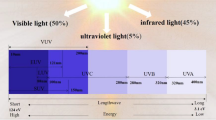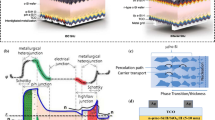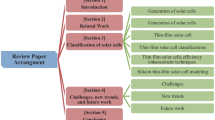Abstract
Micro vapor chamber (MVC) for light emitting diodes (LEDs) can be designed and fabricated to enhance the heat dissipation efficiency and improve the reliability. In this paper, we used photoresist SU-8 and electroforming copper (Cu) to fabricate three kinds of wick structures, which are star, radiation and parallel ones, and the substrate is silicon with thickness of 0.5 mm. Electroforming Cu on silicon to make micro wick structure was a critical step, the ampere-hour factor was used, and accordingly the electroforming time was predicted. The composition of electroforming solution and parameters of electroforming were optimized too. After charging and packaging, thermal behavior tests were carried out to study the heat dissipation performance of MVCs. When the input power was 8 W, the parallel wick structure reached the equivalent temperature of 69.0 °C in 226 s, while the others were higher than that. The experimental results prove that the wick structures have significant influence on the heat transfer capability of MVCs.
Similar content being viewed by others
References
Hopkins R, Faghri A and Khrustalev D, ASME Journal of Heat Transfer 121, 102 (1999).
Peng H, Li J and Ling X, Energy Conversion and Management 74, 44 (2013).
Naphon P and Wiriyasart S, International Communications in Heat and Mass Transfer 61, 140 (2015).
Jinlong Ma, Xing Fu, Run Hu and Xiaobing Luo, Journal of Solid State Lighting 1, 12 (2014).
Go Jeung Sang, Sensors and Actuators A 121, 549 (2005).
Lu X Y, Qian T T, Wang Y P, Lin Y and Fang W, Journal of Optoelectronics·Laser 26, 1843 (2015). (in Chinese)
Guan L Y, Zheng X H, Wang F C and Li S K, Rare Metal Materials and Engineering 38, 524 (2009). (in Chinese)
Nan X L, Zhang B Z, Zhang S H, Peng S and Mao J, Science Technology and Engineering, 265 (2014). (in Chinese)
Du L Q, Liu H J, Qin J and Zhu S M, Optics and Precision Engineering 15, 69 (2007). (in Chinese)
Li H J, Ming P M, Bao X H, Zhang X D and Bi X Y, Advanced Materials Research 936, 1716 (2014).
Li C M, Luo Y, Zhou C P and Shan Q, Micro & Nano Letters 10, 518 (2015).
Xing F and Luo X B, International Journal of Heat and Mass Transfer 65, 199 (2013).
Li C M, Luo Y, Zhou C P, Zou L L, Wang X D and Shan Q, Key Engineering Materials, 1032 (2015).
Author information
Authors and Affiliations
Corresponding author
Additional information
This work has been supported by the State Key Development Program for Basic Research of China (No. 2011CB013105).
Rights and permissions
About this article
Cite this article
Luo, Y., Li, Zx., Zhou, Cp. et al. Thermal behavior of silicon-copper micro vapor chamber for high power LEDs. Optoelectron. Lett. 12, 124–127 (2016). https://doi.org/10.1007/s11801-016-5264-6
Received:
Published:
Issue Date:
DOI: https://doi.org/10.1007/s11801-016-5264-6




